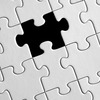Introduction
The use of cutsets is sometimes overlooked by those new to FTA, if you would like an introduction to FTA in general, I would recommend checking out our blog Fault Tree Analysis Explained.
Let’s first explain what a cutset is…it is simply a list of failures(or fault tree events) that lead to the top event when they occur together.
This list of events, typically failures, is one of our failure combinations within our fault tree. There can be multiple combinations of failure that lead to the top event; therefore, we will have a list of cutsets.
Where do cutsets come from?
Once you have built your fault tree, you will be able to get a list of your cutsets. For small fault trees you can simply read them from the diagram, but realistically you will simply print out a list from your software package.
In our example here it is pretty easy to spot our cutsets from the diagram:
- Set 1( 1block ) ( 2e-3 ): MSF
- Set 2( 3blocks ) ( 1.1e-3 ): COM, RCF, EStop
- Set 3( 2blocks ) ( 7.7e-6 ): KRF, JF

Note that we have ranked them based on the probability of failure, with event MSF being the highest contributor. However, if you didn’t have any failure rate data in your fault tree then you would simply have a list of the cutsets without any numerical results. We might then list them based on their size, known as ‘order’.
The list would then look like this:
- Set 1( 1block ): MSF
- Set 3( 2blocks ): KRF, JF
- Set 2( 3blocks): COM, RCF, EStop
Whilst MSF has remained at the top, as it is a single point failure and therefore an order=1, we now see that set 3 has jumped up the list to rank 2. This is a trivial example, but imagine if you had a fault tree with several hundred cutsets, it is always worth ranking your cutsets in a quantitative and qualitative manner.
How can we use cutsets?
Getting your list of cutsets should be the easy part, hopefully a few clicks of a button.
So, what do you do with this list once you have it?

You can start to use them for the following tasks:
- Validation
- You need to ensure that your tree accurately represent the real world, so you can take a sample of your cutsets and ask either yourself, or other engineers to ensure that this combination of failures does in fact result in the top event.
- Your list of cutsets can be used for identifying duplicated events and branches, these are often referred to as MOB’s (multiple occurring branches) and MOE’s (multiple occurring events).
- Model understanding and investigatory work
- Ranking your cutsets qualitatively and/or quantitatively can help you to understand which combinations of failure are the highest contributors.
- There is no fixed approach on how to investigate your cutsets, but some suggestions are:
- For quantitative trees, view the top 20% of contributors, or to view cutsets that contribute to >1% of the top level result.
- For qualitative trees, view cutsets with an order < 3, i.e. combinations involving 1 or 2 failures.
- Common Mode Analysis
- You can take a sample of your highest contributing cutsets and subject them to some form of common mode analysis, looking at factors that may cause all of the events in your cutset to occur simultaneously. For example, if we have 10 cutsets of order 2, then we may check each cutset for common failure causes such as environmental aspects, software, human interaction etc.
Summary
In this article we have looked at what cutsets are, where they come from and how you can use them. I hope that next time you are performing FTA you will endeavor to dig out the cutsets and put them to good use.
How we can help you.
Contact us on +44 (0) 333 996 9930 or email: info@wilderisk.co.uk to discuss your specific needs.




